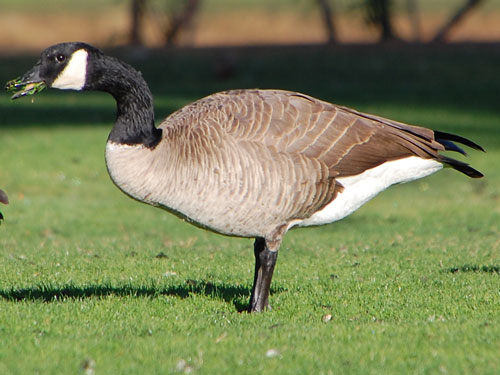Canada Goose
Branta canadensis

Mild weather and urban ponds with richly fertilized lawns nearby provide very amenable conditions for feathered, wintering birds in Scottsdale, Arizona. 06 Feb. 2009.
In city ponds across much of North America Canada Geese are a familiar site, especially during the winter months when their numbers swell with arriving migrants from the Arctic North. We shoot them, eat them, take them for granted or even label them a nuisance. Take a more nuanced view as a naturalist would and you will come to appreciate the marvelous animals they are. Flying thousands of miles and proclaiming their echoing honks to herald changing seasons and days. In a flock they gather strength as their collective eyes keep watch for coyotes and foxes. In flight, flock members take turns leading the way and trailing into the wakes of others. Sadly, their encounter with an aircraft can lead to human disaster, but new radar technology may lessen the risk. Together we share the planet and can benefit from one another. Millions of years of adaptation on the part of geese provide us wonder and knowledge to glean. We can adapt and change our systems to make coexistence a mutual benefit.
Marshes and wetlands adjoin the Gila and Colorado Rivers as they traverse the Sonoran Desert. Much of this habitat has been destroyed as water has been diverted to cities and farms. Remnants are few and are heavily used still by Canada Geese and other migratory waterfowl.